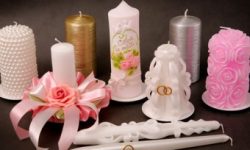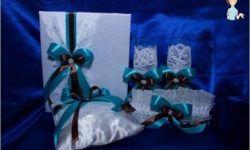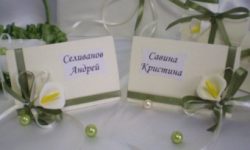We make Ekiban: how and what a bouquet?
Ekibana is the Japanese art of compiling bouquets from living flowers and other natural materials. Is it possible to learn how to create such compositions at home on their own?
In Japan, the beauty of living and inanimate nature is very much appreciated. Moreover, the aesthetic perception of reality is laid by the kids from the ever. In addition, the Japanese believe that the grace, the brightness and originality of the surrounding items can increase the mood, refresh the emotions and become a constant source of positive.
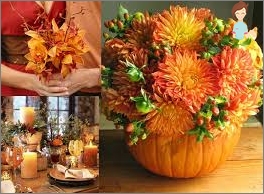 The best example of this is the ancient Japanese art of compiling bouquets – Ekiban (Iquiban). European psychologists confirm that the design of the indoor space of his house or apartment with such compositions from natural materials not only helps to create a fabric in the room, but also develops creative potential, gives inspiration and helps to fight depression to many people – from housewives to successful businessmen.
The best example of this is the ancient Japanese art of compiling bouquets – Ekiban (Iquiban). European psychologists confirm that the design of the indoor space of his house or apartment with such compositions from natural materials not only helps to create a fabric in the room, but also develops creative potential, gives inspiration and helps to fight depression to many people – from housewives to successful businessmen.
The undoubted advantage of Ekiban is its low cost. Of course, you can buy expensive stylish vases and auxiliary decorating elements, if such an opportunity is. But if finances are subject to strict accounting, then everything is quite realistic to do on their own – and the foundation for the bouquet, and decorations, and the central elements of the composition.
The only thing that will have to spend is the time required for the choice of diverse materials – cones, dried flowers, corporate, leaves, branches, live flowers, and to develop a unique concept of a sole bouquet of bouquet.
Basic principles for the creation of Ekiban
In order to learn how to make the Japanese art of drawing up bouquets, first of all, you need to remember several basic rules for creating Ekiban:
- Allocation of the central element. Be sure to be particularly emphasized by the beauty of one single flower (leaf, branches), even if the composition consists of several similar elements;
- Dynamics. To display it in a bouquet, you need branches, flowers or stalks not exactly, but under a certain inclination. In addition, it is desirable that the stems of flowers and branches be curved, as this, according to the Japanese, fills the composition with emotions;
- Asymmetry. The Japanese believe that the asymmetric composition lines symbolize a person, the earth and the sky, combined in a common way of the ideal world (that is, bouquet). The celestial line in classical ekibane is displayed by establishing one of the elements at right angles to the base. At the bottom of the composition passes Line Line. Her size should not exceed ? from length «Human» lines, and the slope of this element is 75 degrees. The human symbol is attached to the obligatory slope to the left (exactly 45 degrees), and its length is ? From the sky line.
Making Ekiban: Practical Tips
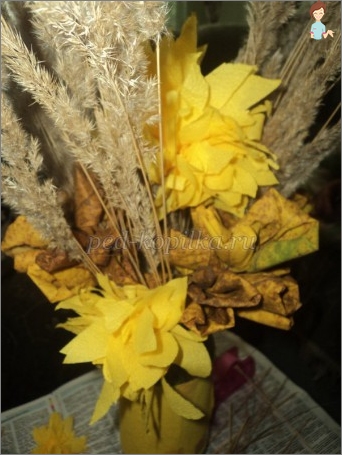 Before creating a bouquet, you must first consider where it will be located, since it is that the design and functional purpose of a particular room must be the starting point for the appearance of the composition.
Before creating a bouquet, you must first consider where it will be located, since it is that the design and functional purpose of a particular room must be the starting point for the appearance of the composition.
At the same time, it is necessary to take into account that Ekiban, made of living colors, should not stand too close to the sunny windows or heating pipes, as the delicate petals are rapidly covered and fall, breaking the creative idea laid in a bouquet.
On the other hand, the composition needs to light well, otherwise it will simply be lost in the interior. Best if the light source will be disguised – so the backlight looks more effectively.
Deciding the issues of placement and illumination, you can start choosing the form of a future bouquet and clarifying the color scheme in which Ekiban will be performed. To do this, it is enough to determine the lead color and the main style of design of the room, as well as make a decision whether the composition will emphasize and supplement them, or it should act as a contrast element.
For example, in the room with the blue walls of Ekibana with their own hands created from dark blue colors, the leading color will emphasize, but a bouquet of bright yellow chrysanthemums will contrast with it.
Now it is necessary to choose a vase. In this case, the main rule is minimalism. Vase should only be the basis, but not the center of Ekiban, so strange forms, large sizes, rich decor and bright colors – are not welcome. An ideal choice will be an inconspicuous one-color vase without any decorations. You can also use baskets, trays, ceramic bowls and sections of natural wood.
As for the material for the bouquet itself, the Japanese, for example, prefer seasonality. That is, Ekiban is compiled from those elements that are characteristic of this time of the year. For example, in the spring it can be a valley, daffodils, primroses, peonies, tulips. Summer – field and garden flowers.
In the fall, you can make Ekiban from leaves, astr, chrysanthemums, chestnuts, and in winter – from spruce or pine branches, decorated with cones. Ekiban components are fastened with plasticine, foam, wire, wet sand or gypsum solution.
Autumn bouquet
A special place in the Japanese art of drawing up bouquets occupies autumn ekiban. Preparations for its creation begin in advance – at the end of the summer – early autumn, since early frost or rainy weather can spoil materials for the composition.
Therefore, August-September is a great time for collecting yellow, green and red leaves, bark of trees, dry herbs, acorns and chestnuts. Live autumn flowers – Astra, Chrysanthemums, Georgina and T.NS. – Better (if there is such an opportunity) to rearrange in a winter garden, pre-searched them into large pots.
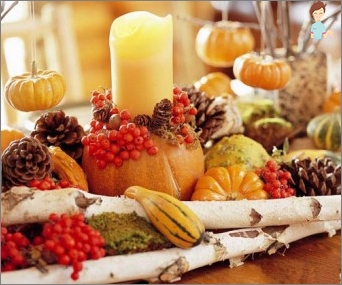 Make the basis for autumn Ekiban can be made of snags, baskets or dried pumpkins. You can use artificial materials – plastic, glass, foam and t.NS. Add the composition of originality will help grapefrute or orange peel, which can also be used instead of a vase.
Make the basis for autumn Ekiban can be made of snags, baskets or dried pumpkins. You can use artificial materials – plastic, glass, foam and t.NS. Add the composition of originality will help grapefrute or orange peel, which can also be used instead of a vase.
Compilation of Ekiban – a thin and painstaking process. However, as a result, you can create a real masterpiece that will bring joy to others and harmoniously fit into any space.
Therefore, it is worth attaching quite a bit effort, and the answer to the question of how to make Ekiban, it will be not so complicated, and wonderful Japanese art will reveal all its secrets, giving inspiration and refreshing feelings. Successful creativity and excellent mood!
